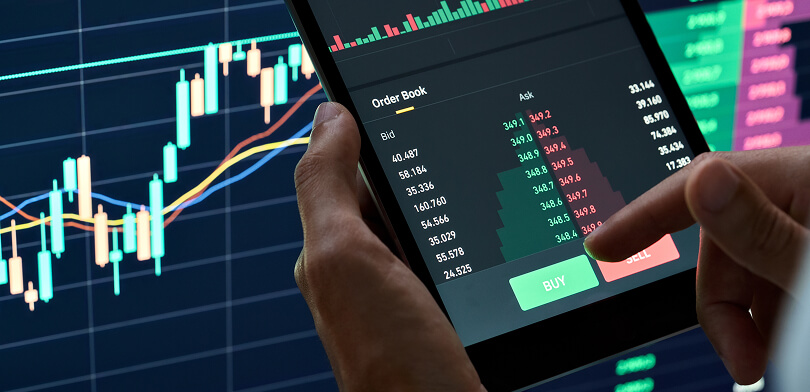- Last Updated: Apr 17,2024 |
- Religare Broking
Sensex and Nifty are unarguably among the most popular indices in India. They can help understand the performance of the entire stock market in India. Investors often use these indices for investment research, benchmark analysis, and decision-making. Many investment products in India are associated with these two indices. Let us comprehend the difference between Sensex and Nifty in this blog.
- Understanding Nifty and Sensex
- Difference Between Sensex and Nifty
- How to Calculate NIFTY?
- How to Calculate Sensex?
- Conclusion
Topics Covered :
Understanding Nifty and Sensex
Understanding stock market indices is essential for each investor in India. Beginners or new investors often ignore stock market indices. As a result, they have nothing to compare the performance of their stocks. Besides benchmarking, stock market indices help with risk assessment and asset allocation. You can know about the market trends, economic indicators, investors’ sentiment, and much more with the help of stock market indices like Sensex and Nifty.
Nifty
The National Stock Exchange (NSE) allows investors to trade shares of over 2,000 companies across various sectors. Among these companies, the top 30 stocks are selected for the NIFTY or NIFTY50 index. Stocks of many influential companies are included in the NIFTY index. Reliance Industries LTD, Tata Consultancy Services LTD, HDFC Bank LTD, ICICI Bank LTD, Infosys LTD, and Hindustan Unilever LTD are some popular stocks in the NIFTY index.
Companies in the NIFTY index belong to 21 different sectors, like banks, IT, crude oil, FMCG, finance, healthcare, and telecom. Each stock has a particular weight in the NIFTY index. The weightage of a company’s stock in NIFTY will be based on its free-float market cap. Stocks of Reliance Industries LTD have the highest weight in NIFTY (10.13%) at present.Sector-wise, banks and IT sectors have a weightage of 20.12% and 180.02% in the NIFTY index, respectively.
Also Read: Meaning of Demat AccountSensex
Understanding both Sensex and Nifty are essential for investors. Unlike NIFTY50, Sensex is not offered by NSE. Sensex or S&P BSE Sensex contains stocks of 30 influential companies. These companies have the top-performing stocks listed on the Bombay Stock Exchange (BSE). Both Sensex and Nifty are based on free-float market capitalisation. Some other factors are also considered for creating indexes, like Sensex and Nifty.
Reliance Industries LTD, Bharti Airtel LTD, State Bank of India, Bajaj Finance LTD, Larsen & Toubro LTD, and Kotak Mahindra Bank LTD are some of the stocks included in the Sensex. Banks and IT sectors have the most weightage in SENSEX currently, which are 23.95% and 20.26%, respectively. It is used by many investors in India for market and benchmark analysis.
Difference Between Sensex and Nifty
Are you still debating on Nifty vs Sensex? You must understand the differences between the two to choose the right stock market index. Many investors use both stocks for investment analysis, market research, and benchmarking. You can choose an index based on different factors. For instance, you might have some stocks in your portfolio, which are also part of the Sensex index. In such a case, you might prefer using Sensex for benchmarking and investment research. Similarly, many stock market investors are interested in sectors included in the Nifty index.
Recommended Read: Difference Between NSE and BSE
Even though both Sensex and Nifty are stock market indices, there are several dissimilarities. Investors using both indices for benchmarking should also understand these differences.
| Nifty 50 | Sensex |
|---|---|
| It is owned and operated by IISL (NSE Indices Limited), a subsidiary of NSE. The organisation was formerly known as India Index Services & Products Limited. | Sensex is owned and operated by the Bombay Stock Exchange. |
| It includes stocks of the top 50 companies listed on the National Stock Exchange. | It includes stocks of the top 30 companies listed on the Bombay Stock Exchange. |
| The starting point for the calculation of the index (base number) is 1000. | Sensex’s base number is 100. |
| The changes in the index are measured from 3rd November 1995. The reference date for an index is also known as the base period. | Sensex’s base period is 1978 – 1979. |
| Nifty 50 index contains stocks of companies belonging to more than 20 different sectors. | Sensex consists of stocks of companies belonging to 14 different sectors. |
| The weightage of banks and IT sectors in the NIFTY 50 index are 20.12% and 18.02%, respectively. | The weightage of banks and IT sectors in the Sensex index are 23.95% and 20.26%, respectively. |
How to Calculate NIFTY?
NIFTY 50 is calculated based on the free-float market capitalisation of the constituents. The free-float market cap is the total value of company shares available for trading. You can multiply the total market cap of a company by the free-float factor (proportion of shares available for trading) to get the result. Here’s the formula for the NIFTY 50 index calculation:
Nifty = Sum of (Market cap of the participant * free float factor) / (Base market cap * 1000)
Note: You must use the above formula for each constituent and add all the results to get the required result.
How to Calculate Sensex?
The formula for the calculation of Sensex is the same as above. However, the base value in this formula is 100, which is the base value of Sensex. Here is the formula for Sensex calculation:
Sensex = Sum of (Market cap of the participant * free-float factor) / (Base market cap * 100)
Note: You must use the formula for each participant and add all the results to calculate the index.
Conclusion
Sensex and Nifty are the most popular stock market indices in India. They represent the performance of the entire stock market of India. The base value and base period are different for both Sensex and Nifty. They also differ based on the number of constituents and individual weightage. Learn more about Sensex and Nifty indexes right away!
Considering the recent surge in Nifty and Sensex, many investors are exploring demat account opening to capitalize on the bullish market sentiment.












